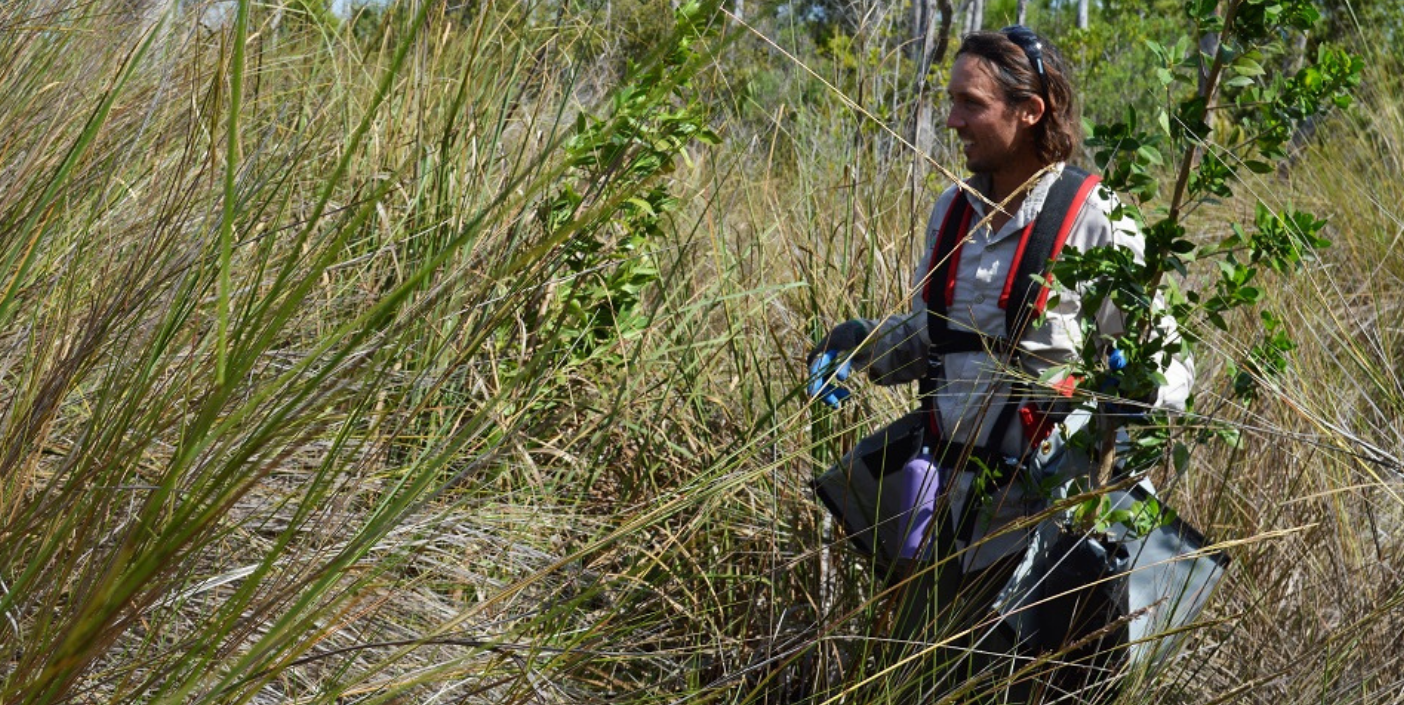
These days, the Garden is well known for botanical beauty. Back in the day, not so much.
At the time of acquisition, the property was clogged with invasive plants such as melaleuca trees — the species infamously introduced to Florida back in the early 1900s to help absorb the swamps. Our founding staff remembers the painstaking process of cleaning the property and culling invasive plants — largely by hand.
Given that legacy, our team is motivated to keep the land as pristine as possible — even when that means doing things the hard way.
One recent Friday morning, Natural Areas Director Eric Foht and Conservation Horticulture Manager Jessica DeYoung push aside chin-high sand cordgrass (Spartina bakeri) and slosh through swampy water lugging 4-foot buttonwood trees (Conocarpus erectus) for planting.
The trees will create a natural boundary between the Garden and a housing development under construction to our south. It’s not unusual to use plants as borders along roadways or neighborhoods. What’s distinct is the method we used to create this one.

A little more than a year ago, Jessica and colleagues from the Conservation Team collected buttonwood seed from that same part of the property. They tended the fast-growing seedlings — about 200 of them — and now are planting them at the marsh’s edge to provide a visual buffer and to control erosion.
In most new construction projects, contractors purchase trees from commercial growers — admittedly an easier process than ours. But after the hard-fought battle to restore the land, the Conservation Team wishes to keep it in its natural state.
“You don’t want to introduce plants that are adapted to another set of conditions to a new location,” Jessica explains. When buying from suppliers, you don’t know the seed sources. A buttonwood originating in North Florida may have different bloom times or other adaptations compared to one from South Florida. “The climates are different, and it affects when the tree seeds. They are very sensitive to timing — most plants are.”
Growing trees from seeds (as opposed to from cuttings, an easier process) also ensures genetic variability, an important factor for ecosystem health.
This project offered a good learning opportunity for our team and may serve as a model for others involved in land restoration and management.
“The things we learned from doing it are universal lessons for restoration,” Eric says. The process of going into the field, collecting seeds, storing them, propagating them, growing them, and planting them can be replicated on countless future projects. “This project encompassed all of those elements.”
 About the Author
About the Author
Jennifer Reed is the Garden’s Editorial Director and a longtime Southwest Florida journalist.

